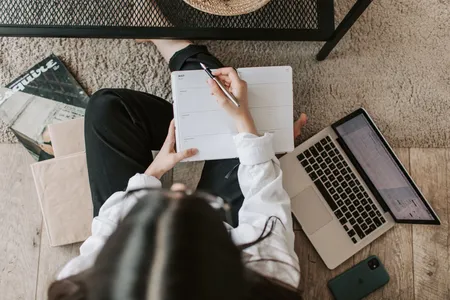Course Summary
Explore the evolution of Roman architecture and learn about its influence in modern-day architecture.Key Learning Points
- Discover the history and significance of Roman architecture
- Study the different styles and techniques of Roman architecture
- Understand the impact of Roman architecture on modern-day architecture
Job Positions & Salaries of people who have taken this course might have
- USA: $80,750 - $139,810
- USA: $80,750 - $139,810
- USA: $46,000 - $107,000
- USA: $80,750 - $139,810
- USA: $46,000 - $107,000
- USA: $67,000 - $143,000
Related Topics for further study
- Roman architecture
- History of architecture
- Art and design
- Architectural techniques
- Modern-day architecture
Learning Outcomes
- Understand the evolution and significance of Roman architecture
- Identify different styles and techniques used in Roman architecture
- Analyze the influence of Roman architecture on modern-day architecture
Prerequisites or good to have knowledge before taking this course
- Basic knowledge of art and design
- Interest in history and architecture
Course Difficulty Level
IntermediateCourse Format
- Online self-paced
- Video lectures
- Quizzes and assignments
Similar Courses
- Greek and Roman Mythology
- Ancient Cities: The Archaeology of Urban Life in the Ancient Near East and Egypt
- Medieval Architecture
Related Education Paths
Notable People in This Field
- Frank Gehry
- Zaha Hadid
- Rem Koolhaas
Related Books
Description
Roman Architecture is a course for people who love to travel and want to discover the power of architecture to shape politics, society, and culture.
Outline
- Introduction to Roman Architecture
- 1.1 Introduction: Roman Urbanism
- 1.2 The Urban Grid and Public Architecture
- 1.3 Bathing, Entertainment, and Housing in the Roman City
- 1.4 Roman Tombs, Aqueducts, and the Lasting Impact of Roman Architecture
- Welcome to the Course!
- Syllabus
- Glossary of Terms
- Suggested Readings - "The Monument Lists"
- Grading
- Pre-Course Survey
- Welcome to Week 1
- Lecture 1 Image Sources
- It Takes a City: The Founding of Rome and the Beginnings of Urbanism in Italy
- 2.1 Romulus Founds Rome
- 2.2 The Temple of Jupiter Optimus Maximus Capitolinus
- 2.3 Defensive Stone Walls and Regular Town Planning
- 2.4 The Hellenization of Late Republican Temple Architecture
- 2.5 The Advent of the Corinthian Order
- Lecture 2 Image Sources
- Technology and Revolution in Roman Architecture
- 3.1 Roman Concrete and the Revolution in Roman Architecture
- 3.2 The First Experiments in Roman Concrete Construction
- 3.3 Sanctuaries and the Expressive Potential of Roman Concrete Construction
- 3.4 Innovations in Concrete at Rome: The Tabularium and The Theater of Marcellus
- 3.5 Concrete Transforms a Mountain at Palestrina
- Lecture 3 Image Sources
- Civic Life interrupted: Nightmare and Destiny on August 24, A.D. 79
- 4.1 Introduction to Pompeii and the City's History
- 4.2 The Early Settlement and the Forum at Pompeii
- 4.3 The Capitolium and Basilica of Pompeii
- 4.4 Pompeii’s Entertainment District: The Amphitheater, Theater, and Music Hall
- 4.5 Bath Complexes at Pompeii
- 4.6 Daily Life and the Eruption of Vesuvius
- Welcome to Week 2
- Lecture 4 Image Sources
- Lifestyles of the Rich and Famous: Houses and Villas at Pompeii
- 5.1 Introduction and the Ideal Domus Italica
- 5.2 Early Pompeian Houses and the Ideal Hellenized Domus
- 5.3 Hellenized Houses in Pompeii
- 5.4 The House of the Faun
- 5.5 Additional Pompeian Houses
- 5.6 Villa of the Mysteries
- Lecture 5 Image Sources
- Habitats at Herculaneum and Early Roman Interior Decoration
- 6.1 Introduction and the History of Herculaneum
- 6.2 Houses at Herculaneum and the Samnite House
- 6.3 Further Developments in Domestic Architecture at Herculaneum: The House of the Mosaic Atrium and the House of the Stags
- 6.4 First Style Roman Wall Painting
- 6.5 Second Style Roman Wall Painting
- 6.6 Second Style Roman Wall Painting and the Family of Augustus
- Lecture 6 Image Sources
- Gilding the Lily: Painting Palaces and Villas in the First Century A.D.
- 7.1 Introduction to Third and Fourth Style Roman Wall Painting
- 7.2 Transition from Second to Third Style at Oplontis
- 7.3 The Mature Third Style at Boscotrecase
- 7.4 A Third Style Garden and Fabullus Paints the Domus Aurea in Rome
- 7.5 Fourth Style Eclecticism and Display in Pompeii
- 7.6 Scenographic Painting in Herculaneum
- Welcome to Week 3
- Lecture 7 Image Sources
- Exploring Special Subjects on Pompeian Walls
- 8.1 Initiation in the Villa of the Mysteries
- 8.2 A Mystical Marriage
- 8.3 The God of Wine and His Brides
- 8.4 Conclusion to the Initiation Rites
- 8.5 The Wanderings of Odysseus
- 8.6 Genre, Historical, and Portrait Painting
- Lecture 8 Image Sources
- From Brick to Marble: Augustus Assembles Rome
- 9.1 From Republic to Empire: Julius Caesar
- 9.2 Julius Caesar, Venus Genetrix, and the Forum Iulium
- 9.3 The Ascent of Augustus and Access to Italian Marble
- 9.4 Augustus Assembles His Marble City
- 9.5 The Forum of Augustus and Its Links to the Greek Past
- 9.6 The Ara Pacis Augustae
- 9.7 Mussolini, The Meier Museum, and a Jewel on Lungotevere
- Welcome to Week 4
- Lecture 9 Image Sources
- Accessing Afterlife: Tombs of Roman Aristocrats, Freedmen, and Slaves
- 10.1 Augustus' Family Mausoleum
- 10.2 Etruscan Antecedents of the Mausoleum of Augustus
- 10.3 The Tomb of Caecilia Metella on the Via Appia
- 10.4 The Pyramidal Tomb of Gaius Cestius
- 10.5 The Tomb of the Baker Eurysaces and His Wife Atistia
- 10.6 Atistia's Breadbasket and Eurysaces' Achievements
- 10.7 Tombs for Those of Modest Means and the Future of Concrete Architecture
- Lecture 10 Image Sources
- Notorious Nero and His Amazing Architectural Legacy
- 11.1 Tiberius and the Villa Jovis on Capri
- 11.2 Caligula and the Underground Basilica in Rome
- 11.3 Claudius and the Harbor at Portus
- 11.4 Claudius' Porta Maggiore in Rome
- 11.5 Nero and the Domus Transitoria in Rome
- 11.6 The Golden House of Nero and the Octagonal Room
- Lecture 11 Image Sources
- The Creation of an Icon: The Colosseum and Contemporary Architecture in Rome
- 12.1 The Year 68-69 and The Founding of the Flavian Dynasty
- 12.2 The Claudianum or The Temple of Divine Claudius
- 12.3 The Colosseum: Icon of Rome
- 12.4 The Colosseum as a Post-Antique Quarry
- 12.5 The Forum or Templum Pacis
- 12.6 The Imperial Baths of Titus
- Welcome to Week 5
- Lecture 12 Image Sources
- The Prince and the Palace: Human Made Divine on the Palatine Hill
- 13.1 The Jewish Wars, the Flavian Dynasty, and the Arch of Titus
- 13.2 The Arch of Titus: Triumph and Tomb
- 13.3 Domitian's Succession and Stadium (The Piazza Navona)
- 13.4 Domitian as Dominus et Deus in the Palatine Palace
- 13.5 Rabirius' Architectural Innovations
- 13.6 The Forum Transitorium and Incipient Baroque Architecture
- Leture 13 Image Sources
- The Mother of All Forums: Civic Architecture in Rome under Trajan
- 14.1 Trajan Expands the Empire and Initiates Public Architecture in Rome - 7:55
- 14.2 The Baths of Trajan
- 14.3 The Forum of Trajan
- 14.4 The Basilica Ulpia
- 14.5 The Column of Trajan
- 14.6 The Markets of Trajan and The Succession of Hadrian
- Welcome to Week 6!
- Lecture 14 Image Sources
- Rome and a Villa: Hadrian's Pantheon and Tivoli Retreat
- 15.1 The Temple of Venus and Roma: A Greek Temple in Rome
- 15.2 The Pantheon: A Temple to All the Gods
- 15.3 The Pantheon and Its Impact on Later Architecture
- 15.4 Hadrian's Villa at Tivoli: Travelogue and Retreat
- 15.5 Unique Designs at Hadrian's Villa and the Castel Sant' Angelo in Rome
- Lecture 15 Image Sources
- The Roman Way of Life and Death at Ostia, The Port of Rome
- 16.1 Ostia: Rome's First Colony
- 16.2 Civic Architecture in Ostia
- 16.3 Transacting Business at the Piazzale delle Corporazioni
- 16.4 Residential Architecture at Ostia: The Insulae
- 16.5 The Warehouses of Ostia
- 16.6 Painted Decoration and Mosaic Floors
- 16.7 Re-emergence of the Domus at Ostia and Tombs at Isola Sacra
- Preparing for the Roman Architecture Mastery Quiz
- Lecture 16 Image Sources
- Mastery Quiz 1
- Bigger is Better: The Baths of Caracalla and Other Second-and Third-Century Buildings in Rome
- 17.1 A Brick Tomb for Annia Regilla on the Via Appia
- 17.2 Second-Century Tomb Interiors in Rome
- 17.3 The Tomb Of the Caetennii in the Vatican Cemetery
- 17.4 The Temple of Antoninus Pius and Faustina the Elder in the Roman Forum
- 17.5 The New Severan Dynasty and The Parthian Arch in the Roman Forum
- 17.6 Biggest Is Best: The Baths of Caracalla in Rome
- Welcome to Week 7
- Lecture 17 Image Sources
- Hometown Boy: Honoring an Emperor's Roots in Roman North Africa
- 18.1 Timgad: The Ideal Second-Century Colony in Roman North Africa
- 18.2 Leptis Magna in the Age of Augustus
- 18.3 The Augustan Theater and the Hadrianic Baths at Leptis Magna
- 18.4 Septimius Severus Sheathes Leptis in Imported Marble
- 18.5 The Severan Temple and Basilica, the Arch of Septimius Severus, and the Unique Hunting Baths
- Lecture 18 Image Sources
- Baroque Extravaganzas: Rock Tombs, Fountains, and Sanctuaries in Jordan, Lebanon, and Libya
- 19.1 Baroque Architecture in the Roman Empire
- 19.2 Exploring Baroque Elements in Italy
- 19.3 Baroque Facadism at Petra
- 19.4 The Baroque in Ancient Asia Minor
- 19.5 The Theater at Sabratha, North Africa
- 19.6 The Temples of Jupiter, Bacchus, and Venus in Baalbek, Lebanon
- Lecture 19 Image Sources
- Roman Wine in Greek Bottles: The Rebirth of Athens
- 20.1 Introduction to Greek and Roman Athens
- 20.2 Augustus and the Athenian Acropolis
- 20.3 Agrippa's Building Program in Athens
- 20.4 The Roman Agora and the Tower of the Winds
- 20.5 Architecture in Athens under Hadrian
- 20.6 The Monument of Philopappos on the Mouseion Hill
- Welcome to Week 8
- Lecture 20 Image Sources
- Making Mini Romes on the Western Frontier
- 21.1 Roman Colonies in the West
- 21.2 Urban Planning in North Italy and the South of France
- 21.3 Augustan Temples at Vienne and Nimes
- 21.4 The Pont du Gard and the Aqueduct at Segovia
- 21.5 Augustus' Pacification of the Alpine Tribes and his Trophy at La Turbie
- 21.6 Funerary and Commemorative Architecture
- Lecture 21 Image Sources
- Rome Redux: The Tetrarchic Renaissance
- 22.1 Crisis in the Third Century and the Aurelian Walls
- 22.2 The Rise of the Tetrarchy
- 22.3 The Decennial or Five-Column Monument in the Roman Forum
- 22.4 The Senate House or Curia Julia
- 22.5 The Baths of Diocletian
- 22.6 The Palace of Diocletian at Split
- 22.7 Tetrarchic Palaces Around the Empire
- Welcome to Week 9
- Preparing for the Roman Architecture Mastery Quiz
- Lecture 22 Image Sources
- Mastery Quiz 2
- Rome of Constantine and a New Rome
- 23.1 The End of the Tetrarchy and the Rise of Constantine the Great
- 23.2 The Baths of Constantine in Rome and the Porta Nigra at Trier
- 23.3 The Basilica or Aula Palatina at Trier
- 23.4 The Temple of Minerva Medica in Rome
- 23.5 The Basilica Nova in Rome
- 23.6 The Arch of Constantine and the Enduring Impact of Roman Architecture
- Post-Course Survey
- Lecture 23 Image Sources
Summary of User Reviews
Discover the history and design of ancient Roman architecture in this engaging course. Students have praised the course for its in-depth exploration of the subject matter and the clear presentation of complex topics.Key Aspect Users Liked About This Course
The course provides a comprehensive overview of Roman architecture and its historical context, helping students gain a deeper understanding of this fascinating topic.Pros from User Reviews
- Engaging and knowledgeable instructors who make the material come alive
- Well-organized lectures and course materials that make it easy to follow along
- Excellent resources and readings that supplement the course content
- Provides a solid foundation for further study of Roman architecture and history
Cons from User Reviews
- Some students found the course material to be too dense and challenging
- The course may not be suitable for beginners or those with little background knowledge in ancient history
- Limited opportunities for interaction with instructors or other students
- The course may be too narrowly focused on Roman architecture for some learners









